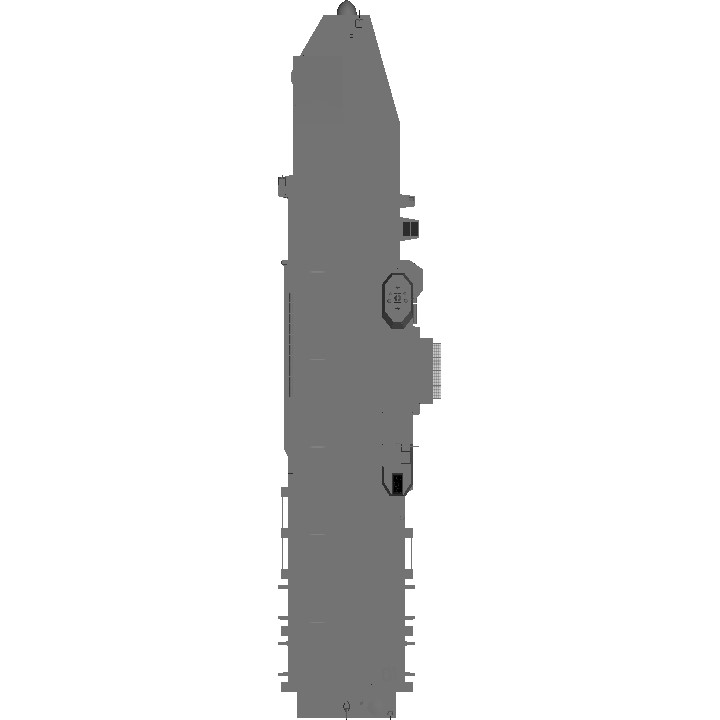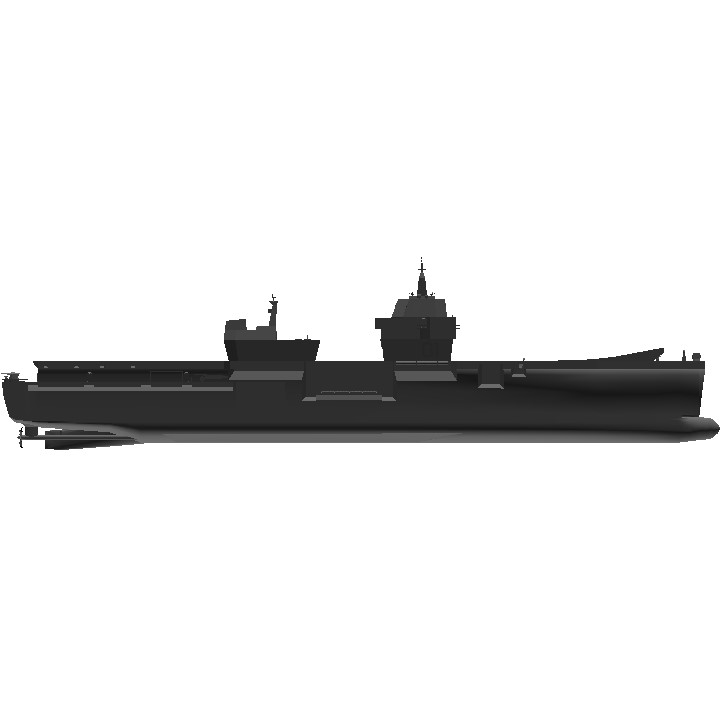Designed and built by ST Maritime with significant assistance from Fincantieri, the Panglima class of Landing Helicopter Docks. Often described as “Light Carriers” by Singaporean Politicians, the class represents the first ships of the Republic of SIngapore Navy to operate fixed-wing aircraft, and the first ships built in Southeast Asia to be able to operate fixed-wing aircraft.

Designated the “JMMS” (Joint Multi-Mission Ship) by the Republic of Singapore Navy, the JMMS is primarily used for amphibious operations, capable of transporting and deploying up to 400 troops, a multitude of armoured vehicles, assault craft and helicopters. It has a secondary role as a carrier, able to deploy F-35Bs.
Design

Sensor Systems
The Panglima class Landing Helicopter Dock utilises numerous sensor systems. It’s Primary Search & Track radar is the Thales SEAFIRE Active Electronically Scanned Array Radar. Also used in a Search role is the Israeli ELTA EL/M-2238, with a indigenously designed and produced Tracking Radar system guiding the BARAK-1SG SAMs. A TACAN system and other smaller radars, including a Kevin Hughes Type 1007 Navigation Radar, complete the radar systems of the JMMS.
Decoy & Processing Systems
The Primary Missile Decoy system aboard the Panglima Class Vessels are the Sagem Défense Sécurité NGDS II. Numerous other ECM and ECCM measures are also aboard the ship.
Armament
 Firing off a BARAK-1SG SAM
Firing off a BARAK-1SG SAM
Possessing Surprisingly heavy weaponry for a ship of its role and Tonnage, the vast majority of weapons systems aboard the Panglima class Vessels are used for self defence.
Among them are:
2 OTO Melara 76/62 STRALES naval gun systems
1 OTO Melara 76/62 Sovraponte Naval Gun System
16 VLS Cells for BARAK-1SG Short-range Surface-To-Air Missiles
16 SYLVER A-50 VLS Cells for Aster 15 & Aster 30 Missiles
2 25mm “Typhoon” RWCS
The ship is also fitted for but not installed with:
Up to 8 ST Kinetics/Israel Aerospace Industries Blue Spear Anti-Ship Missiles

ST Kinetics Information Document on the Barak-1SG
Features & Capabilities

Air Wing
The most prominent feature of the Panglima class LHDs is the large flight deck. While it usually deploys with a complement of SH-60 Super Seahawks, Super Pumas and F-35B Lightning II Aircraft, the flight deck is able to handle aircraft like AV-8B Harriers, CH-47 Chinooks, V-22 Ospreys and AH-64D Apache Helicopters. The Hangar deck is able to accommodate aircraft up to the size of a CH-47 Chinook.
Future additions to the air wings could be the ST Aerospace “Firefox” MALE UCAV, which utilises a STOBAR system. However, currently, the primary combat aircraft operated from the Panglima class LHDs are F-35B Lightning II STOVL Fighters.
Assault Capabilities
The Panglima class LHDs possess a large Well Deck at the stern, able to operate 2 ST Maritime Landing Craft, Heavy. Additionally, 3 Combatant Craft, Medium and 4 Landing Craft, Assault can be operated from Davits on the outside of the Vessel. Troops can be deployed by Super Puma Helicopters, and the Panglima class can also deploy Amphibious Terrex ICVs from their well decks.


Well Deck Ops
Command & Control
The Panglima possesses a large host of C&C Equipment, including advanced SATCOM and UHF Systems. Apart from serving as the flagships of Singaporean Navy, the ship is also responsible for control of any amphibious operations. For Flag Duties, the Flag Bridge, located directly above the main bridge, controls all actions of a fleet. For Amphibious Operations, a 850 Square Metre Amphibious and land operations command centre can host up to 150 personnel, which serves as a headquarters for land and amphibious operations until a proper one can be established.
Medical Facilities
Each ship carries a NATO Role 3 medical facility, equivalent to the field hospital of an Army division or army corps, complete with dentistry, diagnostics, specialist surgical and medical capabilities, food hygiene and psychological capabilities. A telemedicine system allows complex specialised surgery to be performed.
The 900 m2 hospital provides 20 rooms and 69 hospitalisation beds, of which 7 are fit for intensive care. The two surgery blocks come complete with a radiology room, providing digital radiography and ultrasonography, and that can be fitted with a mobile CT scanner. 50 medicalised beds are kept in reserve and can be installed in a helicopter hangar to extend the capacity of the hospital in case of emergency. The Medical Facilities are usually used during Relief Operations, although it can also be used during Combat Operations.
Propulsion Systems
The ships utilise Diesel Propulsion, with twin 8 MW Diesel Alternators powering 2 Propellors to a speed of up to 23 knots.
General Characteristics
Type: Landing Helicopter Dock
Tonnage: 28,000 Tons Full Load
Length:
Beam:
Propulsion: Diesel, 2 8MW Diesel Alternators
Maximum Speed: 23 Knots
Range: 20000km at 18 knots
Sensors & Decoy Systems:
Thales SEAFIRE AESA radar
ELTA EL/M-2238
ST Kinetics ADGR-2 SACLOS radar
Kevin Hughes Type 1007 Navigation Radar
TACAN
Sagem Défense Sécurité NGDS II
Armament:
2 OTO Melara 76/62 STRALES naval gun systems
1 OTO Melara 76/62 Sovraponte Naval Gun System
16 VLS Cells for BARAK-1SG Short-range Surface-To-Air Missiles
16 SYLVER A-50 VLS Cells for Aster 15 & Aster 30 Missiles
2 25mm “Typhoon” RWCS
Landing Craft: 4 DSTA LCH
4 ST Maritime LCA
3 Combatant Craft, Medium
Aircraft Carried: Usually 6 F-35B Lightning II with 14 Helicopters (Usually AS332 Super Puma and S-70 Seahawk)
Notes
Sorry for the way-off-deadline posting! Panglima here was meant to be posted for Singapore’s National Day on 9th August, but now it’s nearly mid-September. Building the JMMS was lots of fun, with me giving an attempt to balance political concerns (The government’s love for [ahem] Mast-measuring) and military goals. The final product would be a LHD that would be “Just enough” to operate F-35Bs, allowing the Panglima to be classified as an “Aircraft Carrier”, while retaining more than enough space to support landing operations. I took large amounts of inspiration from the Marina Militare, specifically the vessels Trieste and Cavour, and to a lesser extent, Giuseppe Garibaldi. While Building this vessel, I realised that the RSN Lacked modern and capable combat craft, and I eventually started building the LCA and LCH to complement this build. Enjoy!
Specifications
General Characteristics
- Predecessor JMMS
- Created On Android
- Wingspan 26.3ft (8.0m)
- Length 115.2ft (35.1m)
- Height 36.5ft (11.1m)
- Empty Weight N/A
- Loaded Weight 135,276lbs (61,360kg)
Performance
- Power/Weight Ratio 0.323
- Horse Power/Weight Ratio 0.014
- Wing Loading 343.7lbs/ft2 (1,678.2kg/m2)
- Wing Area 393.5ft2 (36.6m2)
- Drag Points 0
Parts
- Number of Parts 1075
- Control Surfaces 0
- Performance Cost 3,024





Ship is place Take off and landing F-35B